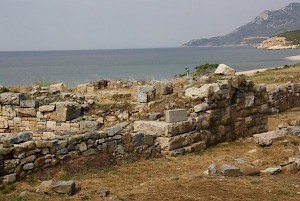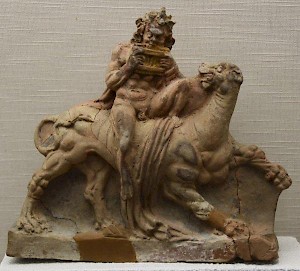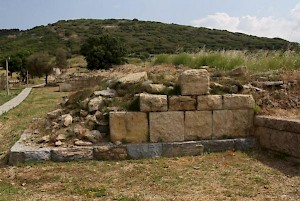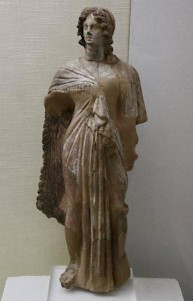Zone
Q8073895Zone: Samothracean colony on the south-east coast of Thrace. It was an important commercial centre in this region and reached the height of its prosperity during the fifth and fourth centuries BCE.

On the south-east coast of Thrace, between the Mount Ismarus and the Hebrus River, Greek colonists from Samothrace built a series of fortified settlements in the late seventth century BCE. In his account of the Persian invasion of Greece in 480, the Greek researcher Herodotus of Halicarnassus refers to them as the "Samothracean forts" note. These colonies, which comprised the Samothracean peraia (i.e., the mainland opposite the island), exploited the potential of this area to the maximum, controlling as they did the main road from east to west and access to the interior of Thrace. The inhabitants provided services and exported goods to the rapidly growing elite of the Odrysian Kingdom in Thrace.

The ancient sources refer to Mesembria, Drys, Zone, and Sale; later, in Roman times, Tempyra and Charakoma are mentioned as well. Of these, only one city has so far been located and systematically excavated. Earlier associated with Herodotus' Mesembria, this site has now been identified as Zone, the most important settlement among the cities of the Samothracian peraia.
Zone was surrounded by a fortification wall, reinforced at intervals by towers. It also encloses a hill in the north, which was the settlement's acropolis. Inside the fortification a large section of the town has already been uncovered. The often narrow streets defined the building blocks.

Groups of houses can be made out and the commercial centre of the city has been identified. Two public buildings have also been found, as well as a small sanctuary of Demeter and a temple of Apollo.
A set of inscribed potsherds (ostraca) is of special significance. They offer the first decipherable texts in the Thracian language that was spoken in this region. This Thracian dialect was apparently closely related to the Greek language.
 Zone, City wall |
 Zone, Melting oven |
 Zone, Amphoras |
 Zone, Temple of Apollo |
The cemetery has yielded exceptionally rich finds (vases, figurines, gold jewelry, etc.) which reveal the wealth and high cultural level of the inhabitants of Zone. The city reached the height of its prosperity in the fifth and fourth centuries BCE.

Habitation continued until the second century. This development corresponds chronologically with the final predominance of the Macedonian kings, who crushed the Odrysian kingdom and transformed the political-economic relationships in Thrace. Zone lost its function as node in international trade, began to decline, and was gradually abandoned. For the next centuries, after the Romans established their domination in the area and until the fifth century CE, only very few traces exist, suggesting an occasional occupation of a temporary nature, although the city was situated along the Via Egnatia, one of the main roads of the Roman Empire.
Concluding Remark
This article was based on the excavation results from the 19th Ephorate of Prehistoric and Classical Antiquities - Macedonia Greece.